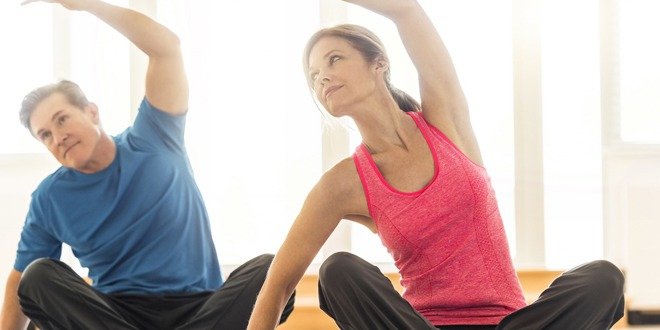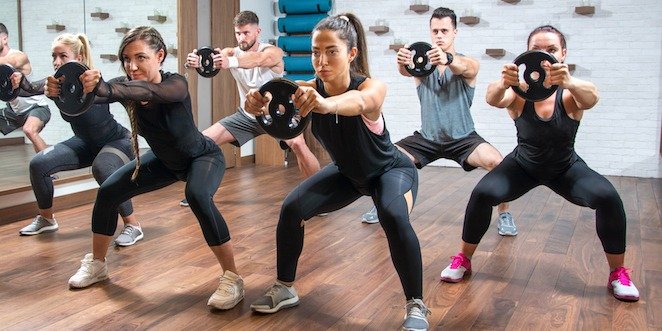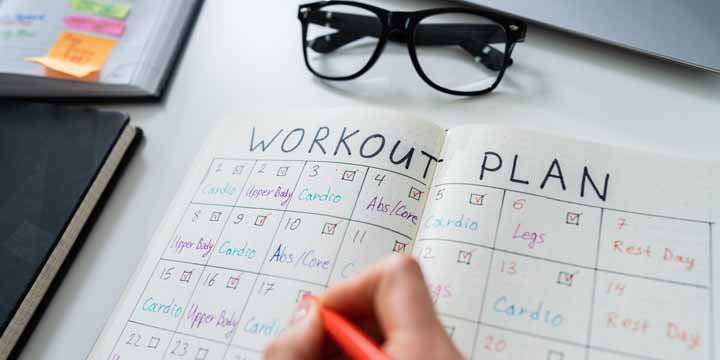
Warming up before exercise and cooling down afterward are essential steps in any fitness routine. These practices help prepare your body for physical activity and support recovery afterward.
Why is a warm-up important?
The purpose of a warm-up is to gradually prepare the heart, lungs, blood vessels and muscles for safe, effective and comfortable exercise. The increased level of activity during warm up causes an increase in temperature in both the working muscles and the body as a whole. This increase in temperature speeds up various enzymes and other chemical reactions, causing your blood vessels including the coronary arteries, to relax and dilate. This results in an increase in blood flow to the working muscles and the heart.
The increased blood flow means that more oxygen is available to the working muscles (e.g. to the legs) and to the heart muscle. Therefore, it allows the body to exercise without undue physical stress. In addition to getting the body ready to move, warming up properly can help prevent injury and improve performance.
What is the best way to warm up?
The warm-up is really a slower version of your exercise. It should be the same type of exercise or at least similar to the activity you will do during your exercise, but at a lower intensity.
For example, if you exercise on a stationary bike, then you should also warm up on the bike for at least 5 minutes, but at a slower pedal speed and with little or no resistance. If you plan to walk, then do a slow walk for a minimum of 5 minutes at a slower pace than your intended exercise walking pace.
A minimum of 5 minutes is recommended to warm up, but the time required varies from one individual to another. Age, fitness level, presence or absence of symptoms, exercise intensity and weather conditions can influence the length of warm up required.
Why is the cool down important?
The most important function of the cool down is to reduce blood pooling in the legs. During walking or cycling exercise, there is increased blood flow to the working muscles in your legs. If this increased flow is not returned to the upper body in a balanced way, there will be pooling of blood in the legs.
If the pooling of blood occurs in the legs, there will be less blood returning to the heart and therefore less blood for the heart to pump out. It is possible then, that you could experience light-headedness or dizziness.
By walking slowly during cool down, the leg muscles continue to exercise and therefore continue to help pump blood back to the heart and reduce blood pooling in the legs. Because blood flow to the heart and head has been maintained, you are less likely to experience any of the above symptoms.
What is the best way to cool down?
A slow walk for a minimum of 5 minutes is advised for a proper cool down. If you exercise on a stationary cycle, then (as for warm up) cycle at a slower pedal speed with little or no resistance.
A note on terminology:
Sometimes the term “warm up” has been used to describe stretching exercises that help to improve our flexibility. Flexibility training is important, however should not replace the cardiovascular warm-up described above where the purpose is to get the heart and lungs prepared for work!
Incorporating these practices into your workout regimen can significantly enhance your performance and minimize the risk of injury. Whether you’re an elite athlete, a weekend warrior or someone just starting a fitness program, proper warmup and cooldown routines are essential for a safe and effective workout experience.
Final tips for warm up and cool downs
- leave extra time before and after your main activity to warm up and cool down
- start your warm-up slowly, and gradually build up how fast you move
- make sure you warm up and cool down all areas of your body
Speak with a member of the diabetes healthcare team if you have any concerns about an appropriate warm up and/or cool down routin



